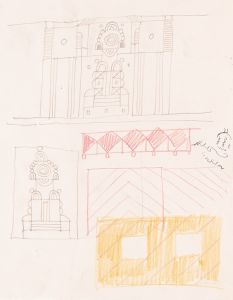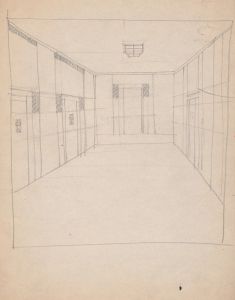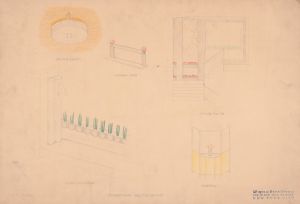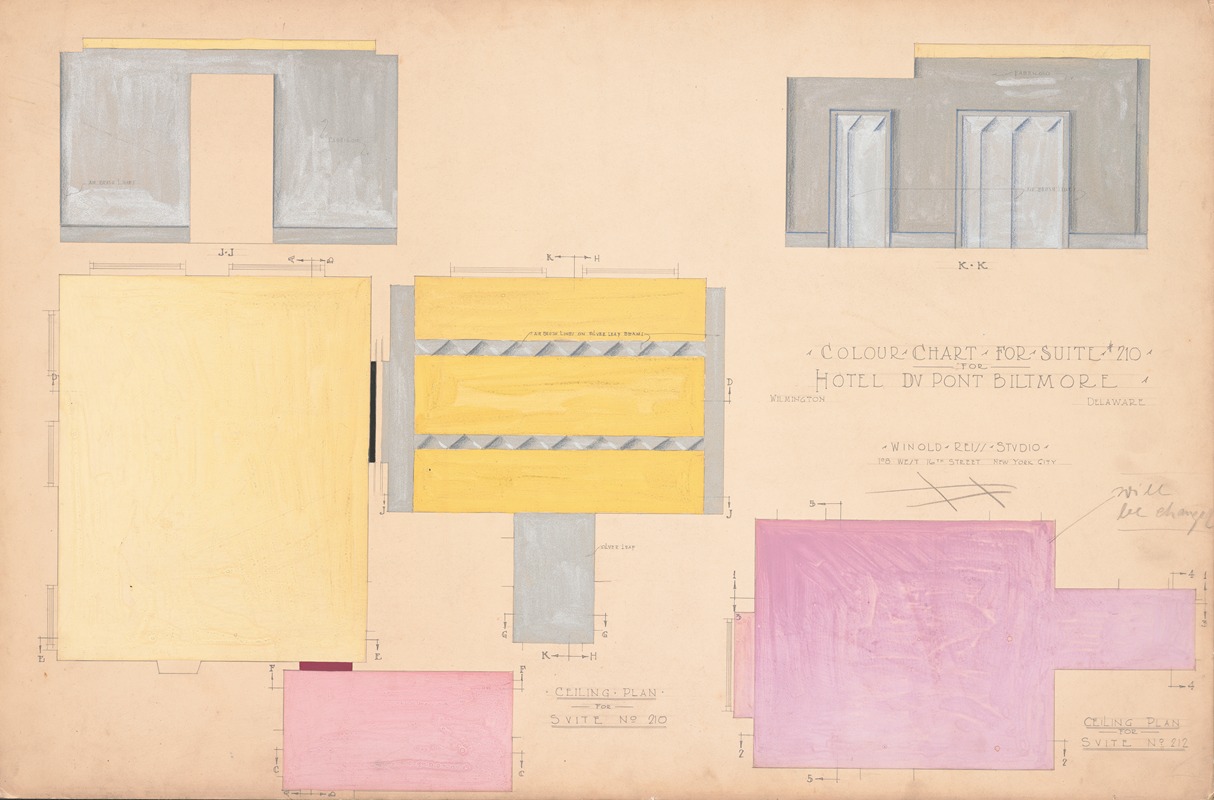
Designs for Modern Hotel Suite, Du Pont Biltmore Hotel, Wilmington, Delaware.] Colour chart for Suite 210
A hand-painted replica of Winold Reiss’s masterpiece Designs for Modern Hotel Suite, Du Pont Biltmore Hotel, Wilmington, Delaware.] Colour chart for Suite 210, meticulously crafted by professional artists to capture the true essence of the original. Each piece is created with museum-quality canvas and rare mineral pigments, carefully painted by experienced artists with delicate brushstrokes and rich, layered colors to perfectly recreate the texture of the original artwork. Unlike machine-printed reproductions, this hand-painted version brings the painting to life, infused with the artist’s emotions and skill in every stroke. Whether for personal collection or home decoration, it instantly elevates the artistic atmosphere of any space.
Winold Reiss was a German-American artist and designer known for his contributions to modern design and his role in shaping American interior aesthetics in the early to mid-20th century. One of his notable works includes the "Designs for Modern Hotel Suite, Du Pont Biltmore Hotel, Wilmington, Delaware," specifically the color chart for Suite 210. This work exemplifies Reiss's innovative approach to interior design and his ability to blend color theory with practical application in commercial spaces.
Reiss was born in Germany in 1886 and immigrated to the United States in 1913. He brought with him a European sensibility and a keen interest in modernism, which he applied to various artistic endeavors, including portraiture, graphic design, and interior decoration. His work was characterized by a bold use of color and a commitment to integrating art into everyday environments.
The Du Pont Biltmore Hotel in Wilmington, Delaware, was one of the many projects where Reiss applied his design philosophy. The hotel itself was a symbol of luxury and modernity during its time, catering to a clientele that appreciated contemporary aesthetics and comfort. Reiss's involvement in the hotel’s design was part of a broader trend in the early 20th century where artists and designers were increasingly collaborating on commercial and public spaces to create cohesive and immersive environments.
The color chart for Suite 210 is a testament to Reiss's meticulous attention to detail and his understanding of color dynamics. While specific details about the color chart are limited, it is likely that Reiss employed a palette that was both vibrant and harmonious, reflecting his belief that color could significantly influence mood and atmosphere. His approach often involved using contrasting colors to create visual interest while ensuring that the overall composition remained balanced and pleasing to the eye.
Reiss's work on the Du Pont Biltmore Hotel would have involved not only the selection of colors but also the design of furnishings, textiles, and other decorative elements that contributed to the suite's modern aesthetic. His designs often featured geometric patterns and motifs inspired by various cultural influences, which he skillfully adapted to suit the context of each project.
Throughout his career, Winold Reiss was recognized for his ability to transcend traditional boundaries between fine art and functional design. His contributions to interior design, particularly in commercial settings like the Du Pont Biltmore Hotel, helped pave the way for future generations of designers who sought to create environments that were both beautiful and practical.
Reiss's legacy is evident in the continued appreciation of his work and the influence he had on the development of modern design in America. His projects, including the color chart for Suite 210, remain an important part of the history of interior design, illustrating the enduring impact of his vision and creativity.





![[Designs for roadhouse or terrace restaurant.] [Scheme [B] with a T-plan, 5- bays, with painted tulips in the pediments.](/imgs/249264/s/winold-reiss-designs-for-roadhouse-or-terrace-restaurant-scheme-b-with-a-tplan-5-bays-with-painted-tulips-in-the-pediments-ad771334.jpg)
![Design drawings for miscellaneous interiors, some possibly related to the Hotel St. George, New York, NY.] [Sketch for miscellaneous interior](/imgs/249278/s/winold-reiss-design-drawings-for-miscellaneous-interiors-some-possibly-related-to-the-hotel-st-george-new-york-ny-sketch-for-miscellaneous-interior-28d93815.jpg)
![Design for fine art print, ‘The Mad Dancer’.] [Woodcut print](/imgs/249286/s/winold-reiss-design-for-fine-art-print-the-mad-dancer-woodcut-print-c03b5ea2.jpg)
![Design for unidentified bedroom with canopy bed.] [Interior perspective elevation](/imgs/249297/s/winold-reiss-design-for-unidentified-bedroom-with-canopy-bed-interior-perspective-elevation-72bee5bc.jpg)
![Designs for Alamac Hotel Congo Room, 71st and Broadway, New York, NY.] [Six color studies of interior, furniture, and murals](/imgs/249310/s/winold-reiss-designs-for-alamac-hotel-congo-room-71st-and-broadway-new-york-ny-six-color-studies-of-interior-furniture-and-murals-3a813bdb.jpg)
![Designs for lamps with triangular shades.] [Design with white, red, and metallic silver](/imgs/249315/s/winold-reiss-designs-for-lamps-with-triangular-shades-design-with-white-red-and-metallic-silver-40bb661.jpg)
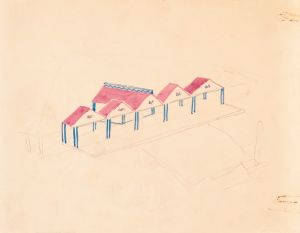
![Drawings for proposed decorations of Mike Lyman’s Restaurant, 424 W. Sixth St., Los Angeles, CA.] [Drawing #8, playroom elevation N and O](/imgs/249339/s/winold-reiss-drawings-for-proposed-decorations-of-mike-lymans-restaurant-424-w-sixth-st-los-angeles-ca-drawing-8-playroom-elevation-n-and-o-2e0cd08a.jpg)

![Designs for restaurant and bar interiors with curving bars and stairways.] [Sketches for bars and restaurants](/imgs/249417/s/winold-reiss-designs-for-restaurant-and-bar-interiors-with-curving-bars-and-stairways-sketches-for-bars-and-restaurants-195836c8.jpg)
